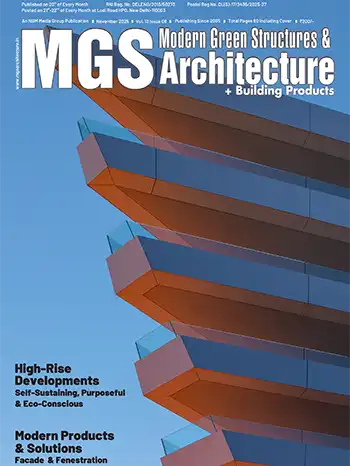Chinmay Ashokkumar Patil, Vertical Head – Healthcare, Edifice Consultants

Hospital Planning Adapting to Evolving Healthcare Needs
Hospital design has traditionally focused on functionality, but today’s healthcare facilities must be much more than efficient buildings—they must be adaptable, patient-centric, and aligned with the evolving needs of both healthcare providers, patients and their attendants. This requires a flexible approach to design that considers the increasing complexity of treatment modalities, specialized care units, and the importance of patient well-being.Innovative hospital planning is built on interdisciplinary collaboration, where architects, engineers, and healthcare professionals work together to ensure that spaces are optimized for medical workflows while remaining accessible and comfortable for patients. Hospital infrastructure must also be scalable and flexible to meet the future demands of a growing population and changing landscape of how healthcare is being delivered.
An example of this approach can be seen in the SVICCAR (Sri Venkateswara Institute of Cancer Care & Advanced Research, Tirupati). The hospital is designed with flexibility in mind, allowing for future expansions without disrupting operations. By integrating clinical components into the architectural design process, the facility ensures that the built environment seamlessly supports patient care and operational efficiency. Its modular planning allows for future expansion in response to the growing demand for specialized oncology services, ensuring that the hospital can evolve alongside the community it serves. Such scalable design strategies can be applied across various typologies to address the diverse needs of India’s healthcare landscape.
By adopting flexibility and scalability in design, integrating sustainable practices, and incorporating cutting-edge technology, architects and designers can create solutions that prioritize function and accessibility.
Chinmay Ashokkumar Patil
Scalable Healthcare Models for a Growing Population
As India’s population continues to grow and urbanize, modular and prefabricated designs are emerging as key solutions, allowing for phased expansions that cater to the population’s evolving needs without compromising service delivery, or, more importantly, the existing operations. Scalable healthcare models allow hospitals to grow incrementally, ensuring long-term sustainable adaptability.Such models also enable healthcare systems to respond more quickly to regional healthcare needs. By integrating flexible, modular components, medical facilities can be designed for easy expansion or reconfiguration as demand for services evolve.
Sustainability in Healthcare Design
Sustainability is becoming a critical factor in healthcare infrastructure design, not just from an environmental perspective but also in terms of long-term operational efficiency. Green building practices, energy-efficient systems, and water conservation measures are essential in creating facilities that are both resource-efficient and cost-effective.Projects are increasingly incorporating green spaces, natural lighting, and materials that contribute to a healthier atmosphere for patients. Moreover, energy-efficient design can help reduce the operational expenses of hospitals, which are often major consumers of resources and costs to patients. Integrating energy-efficient HVAC systems, rainwater harvesting, and using low-impact building materials to minimize the facility’s environmental footprint, are sustainable practices that minimize negative environmental impacts.

Technology and Smart Hospitals
Technology is reshaping the healthcare landscape, particularly by developing smart hospitals that leverage digital infrastructure to enhance patient care and operational efficiency. From real-time monitoring systems to AI-driven diagnostics, integrating technology into hospital design enables healthcare providers to offer faster, more accurate care while optimizing resource use.Smart hospitals also support the growing need for data-driven decision-making in healthcare. Real-time analytics can provide doctors and healthcare administrators with immediate insights into patient conditions, operational status, and resource allocation. This improves the quality of care while ensuring that hospitals operate at peak efficiency.
Hospitals now employ advanced data analytics and digital infrastructure to monitor patient health, track medical equipment, and optimize hospital operations. As technology evolves, its role in healthcare architecture will only become more critical in enhancing patient outcomes and creating more efficient facilities.
Ensuring Equitable Healthcare Access Across India
As India seeks to enhance its healthcare infrastructure, one of the most important objectives is ensuring that all citizens, regardless of location or socio-economic status, have access to quality medical care. Achieving this goal requires creating healthcare facilities that are not only advanced and well-designed but also widely accessible, particularly in underserved rural and semi-urban areas.The scalability of healthcare infrastructure plays a significant role in addressing this challenge. By designing hospitals that can be expanded and adapted to meet regional needs, we can ensure that healthcare facilities are built with future growth in mind, making it possible to deliver quality care to a larger portion of the population over time.
Through collaborative efforts between the private and public sectors in ensuring that healthcare infrastructure keeps pace with population growth and changing healthcare needs, India can create a healthcare system that meets the needs of today while being adaptable to the challenges of tomorrow.
















